Setting the Pace with
AVEIR™ Leadless Pacemakers
Single and Dual Chamber Leadless Pacemaker Systems, only from Abbott
MAT-2514762 v1.0 | Item approved for U.S. use only. ©2025 Abbott. All Rights Reserved.
Learn more about how Single and Dual Chamber Leadless Pacemakers (LPs) from Abbott have helped patients with a broad spectrum of health concerns live healthier, better lives.
Bridge Therapy
AVEIR™ VR Ventricular LP is an appropriate choice for patients indicated for permanent pacing but who may need temporary or interim pacing support following certain types of procedures like laser lead extractions (LLEs) and TAVR. For these patients, AVEIR VR LP offers:
- Long-term retrievability - The device can be removed at end of service (EOS) without leaving hardware behind.1
- An upgradeable system1 - The LP device can be upgraded to dual chamber pacing by adding an atrial implant and paired via i2i™ communication to establish AV synchrony.
Dr. Cyrus Hadadi
“Real World” Abbott AVEIR VR Leadless Pacemaker Case-October 2022 (post-TAVR)
Dr. Devi Nair
AVEIR VR Patient Selection and Implant Considerations (post-infection and LLE)
Dr. Cyrus Hadadi
“Real World” Abbott AVEIR VR LP Case (active patient, post-LLE, post-infection)
Dr. Anne Kroman AVEIR VR case study
Post-infection and post-LLE patient indicated for dual chamber
Dr. Anne Kroman AVEIR VR case study
Patient with endocarditis/sepsis and intermittent CHB
Dr. Anne Kroman AVEIR VR case study
Patient with permanent AF (tortuous access)
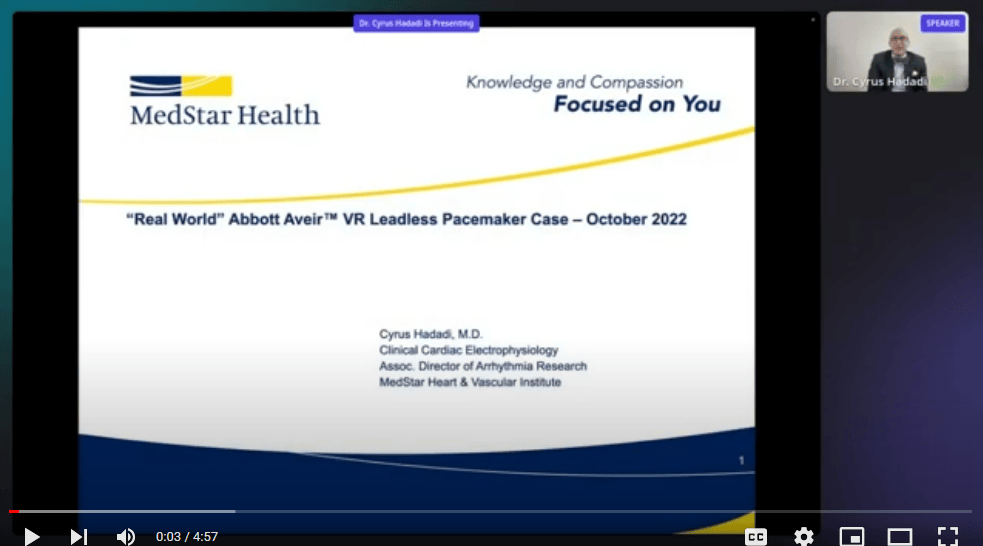
Dr. Cyrus Hadadi
“Real World” Abbott AVEIR VR Leadless Pacemaker Case-October 2022 (post-TAVR)
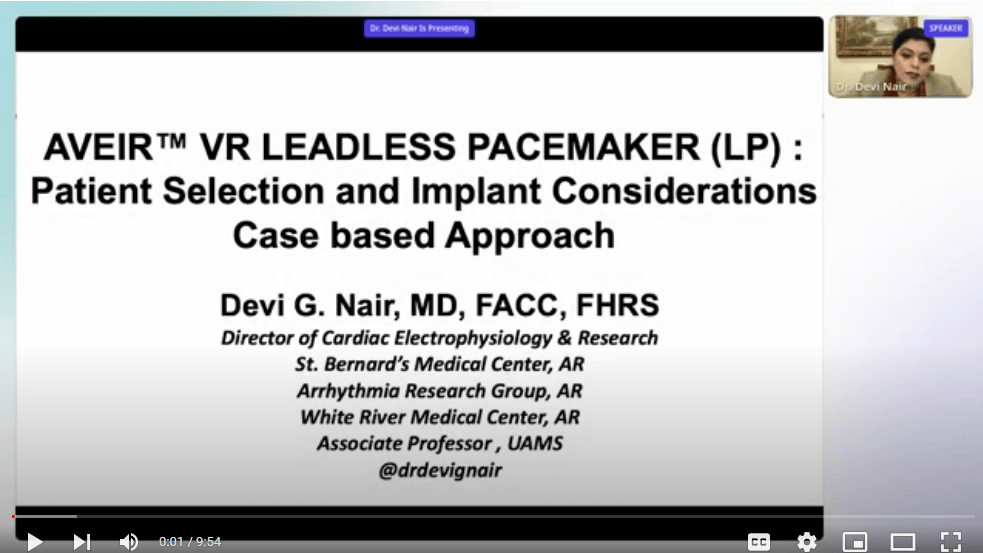
Dr. Devi Nair
AVEIR VR Patient Selection and Implant Considerations (post-infection and LLE)
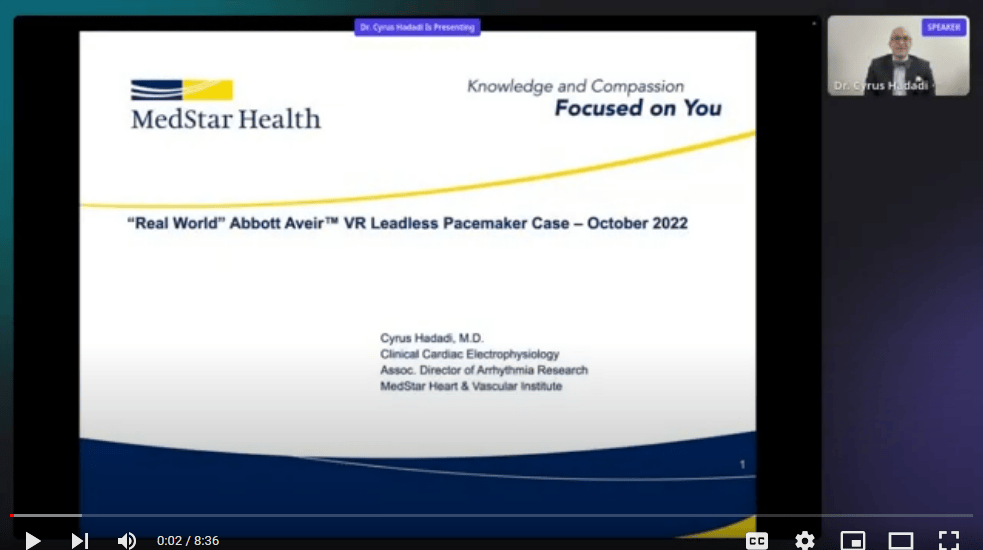
Dr. Cyrus Hadadi
“Real World” Abbott AVEIR VR LP Case (active patient, post-LLE, post-infection)
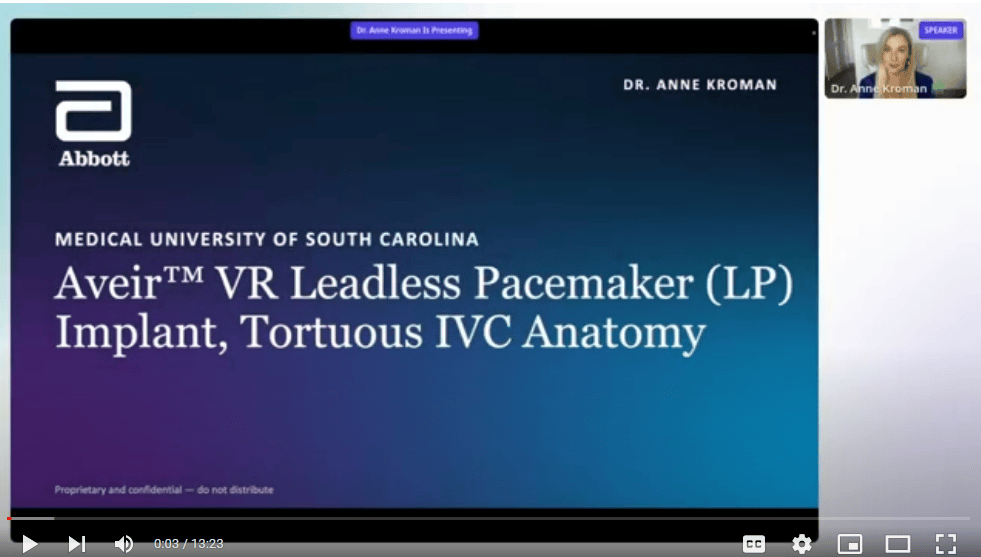
Dr. Anne Kroman AVEIR VR case study
Post-infection and post-LLE patient indicated for dual chamber
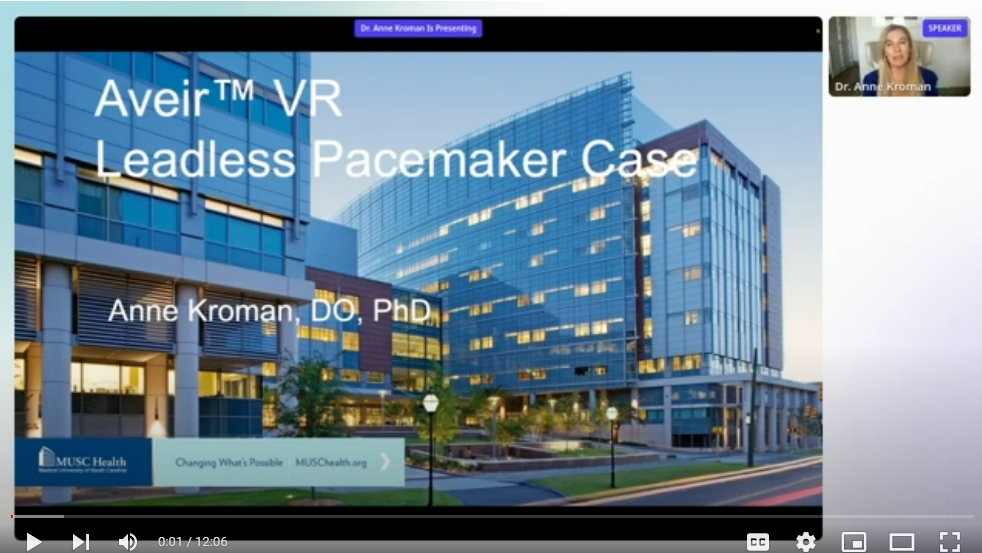
Dr. Anne Kroman AVEIR VR case study
Patient with endocarditis/sepsis and intermittent CHB
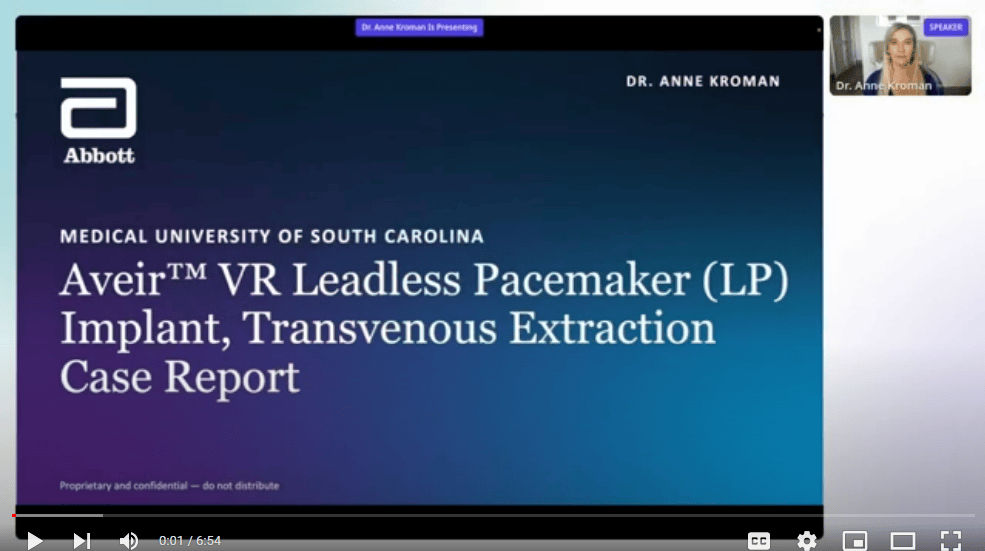
Dr. Anne Kroman AVEIR VR case study
Patient with permanent AF (tortuous access)
Symptomatic AV Block
For patients with symptomatic AV block who have persistent atrial fibrillation (AF) or other atrial tachyarrhythmia (AT), AVEIR VR Ventricular LP can provide:
- Pacing support for AV block.
- Long-term retrievable in the event of disease progression.
- An upgradeable system - The LP device can be upgraded to dual chamber pacing by adding an atrial implant and paired via i2i™ communication to establish AV synchrony.1
Dr. Devi Nair
AVEIR VR LP Patient Selection and Implant Considerations (Young, Malignant Bradycardia)
Dr. Devi Nair
AVEIR VR Patient Selection and Implant Considerations (higher risk, AF slow VR)
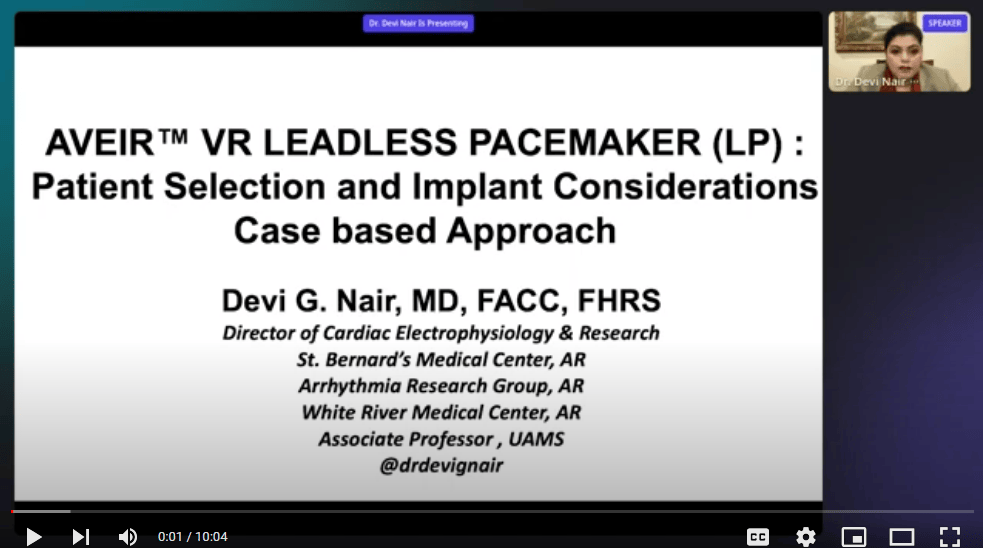
Dr. Devi Nair
AVEIR VR LP Patient Selection and Implant Considerations (Young, Malignant Bradycardia)
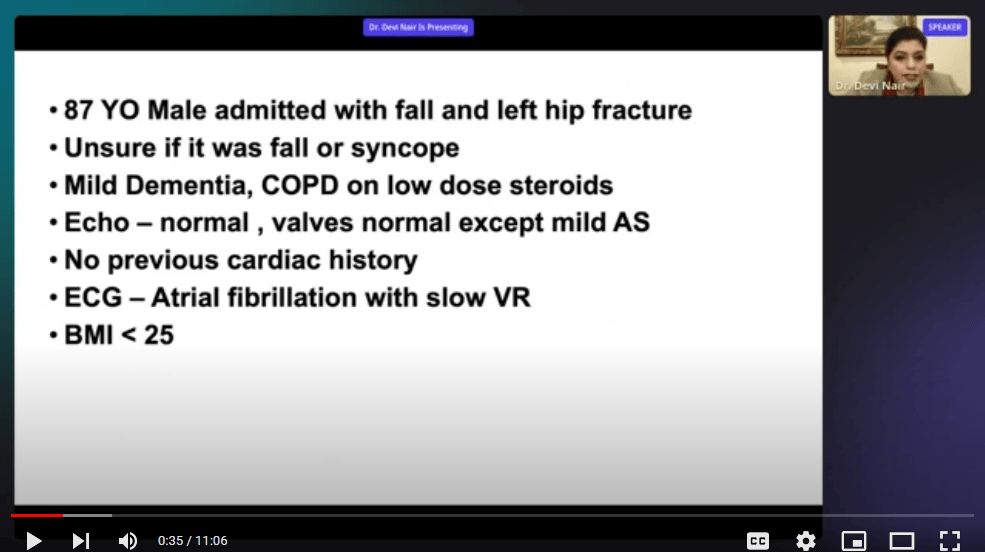
Dr. Devi Nair
AVEIR VR Patient Selection and Implant Considerations (higher risk, AF slow VR)
Persistent Atrial Fibrillation
Patients in this category may experience symptomatic pauses secondary to persistent or chronic atrial fibrillation, slow ventricular response or malignant tachy-brady syndrome, severe comorbidities like end-stage kidney disease1 (ESKD), or access and mobility problems that would support leadless pacing as the preferred pacing option.
AVEIR VR Ventricular LP is an appropriate option for these patients because:
- No AV synchrony required with this indication.
- Addresses access concerns.
- Eliminates risk of lead complications and pocket infection.2
Dr. Cyrus Hadadi
"Real World" Abbott AVEIR VR Leadless Pacemaker Case - October 2022
Sinus Node Dysfunction
Patients with sick sinus and intact AV conduction can benefit from an atrial-only, leadless pacing option that is upgradeable, retrievable, and will not contribute to additional risks associated with lead- and pocket-related complications when compared with transvenous devices.2,3
AVEIR™ AR Atrial LP provides:
- A safe and effective AAI(R) pacemaker option that opens up the patient population who may now be candidates for leadless pacing.2
- An option to add a ventricular device later for leadless dual chamber pacing.1
AVEIR LP Testimonials
Mikey's Story: Living with AVEIR DR Dual Chamber Leadless Pacemaker System
Setting the Pace for a Lifetime
Bryce’s Story: From Saving Lives to Living Fully Again: First-Responder Bryce's Journey to AVEIR DR LP
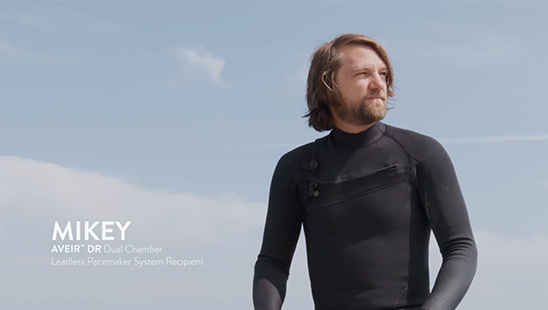
Mikey's Story: Living with AVEIR DR Dual Chamber Leadless Pacemaker System

Setting the Pace for a Lifetime
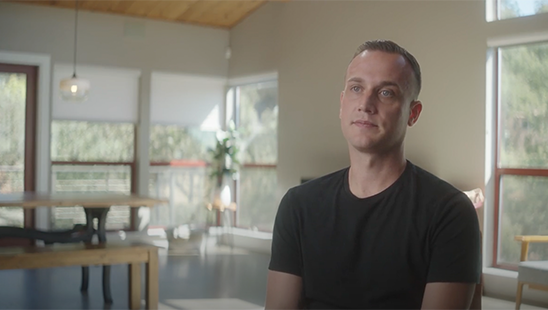
Bryce’s Story: From Saving Lives to Living Fully Again: First-Responder Bryce's Journey to AVEIR DR LP
Stay Informed
Sign up to hear about our technology, education opportunities, and more.
Read the Latest Blog Article
Stay up to date with recent news, product highlights, and case studies.
References
- AVEIR Leadless Pacemakers and Delivery Catheter IFU. ARTEN600284235.
- A Dual-Chamber Leadless Pacemaker. The New England Journal of Medicine (NEJM), May 2023, www.nejm.org/doi/full/10.1056/ NEJMoa2300080.
- Nielsen JC, Thomsen PEB, Højberg S, et al. A comparison of single-lead atrial pacing with dual- chamber pacing in sick sinus syndrome. European heart journal. 2011;32(6):686-696. doi:10.1093/ eurheartj/ehr022
For additional information about specific MR Conditional, including warnings, precautions, adverse conditions to MRI scanning and potential adverse events, please refer to the MRI-Ready Leadless Systems Manual at medical.abbott/manuals or check our MRI-Ready resources at cardiovascular.abbott/mriready.
MAT-2302697 v7.0
.png)
